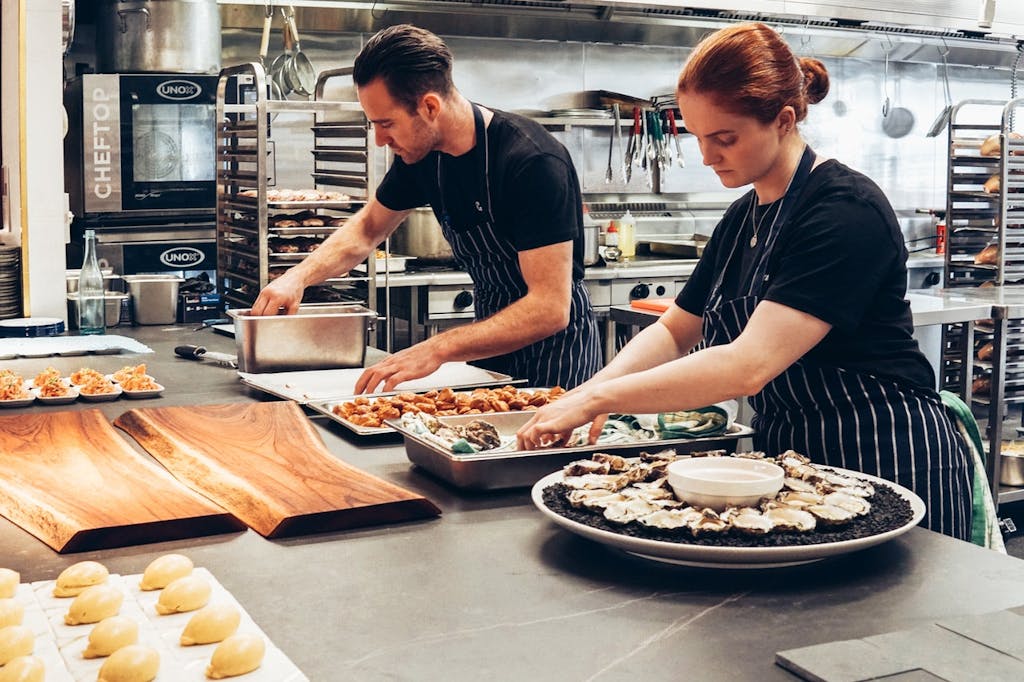LONDON — Food waste statistics boggle the mind. We may all have a statistic that leaves us incredulous. For me, it’s bread.
In the United Kingdom, the amount of bread wasted totals 1 million loaves, or 24 million slices, every day, according to the Office of National Statistics. Food waste in the United States is put at 30 to 40 percent of the total food supply, according to the U.S. Department of Agriculture. The numbers are overwhelming.
There’s a lot that needs to be done on a large scale. Much of it should be the responsibility of the big food manufacturers and retailers. At the same time, there’s plenty we can be doing at home, by ourselves.
The first suggestion is practical: Buy less food at once. The second is more creative: Use up — and make full use of — what we already have. Now, using up and making full use of are slightly different things, but both can be a huge source of inventiveness and deliciousness. They’re where the fun, the innovation and the surprises come in.
“Using up” simply means using up those last bits. If the last slice or two of bread is looking a bit sorry for itself, don’t chuck it! Blitz it instead! Make bread crumbs for your next round of vegetable schnitzels. Or freeze the bread crumbs for another time. Or use the day-old bread as a springboard for a whole new dish: panzanella, ribollita, romesco — a salad, a soup and a sauce whose very reason is the stale bread that inspired them.
“Making full use of” offers even more room for exploration. It means looking at the things we think we’ve used to their full potential, and seeing if we can’t eke out one more use. These are the vanilla pods added to a jar of sugar once the seeds are scraped out, or the herbs wilting in the fridge that we blend with avocado and olive oil, for a glossy, green dressing, for example.
If you have too much of something, turn it into something else. Labneh, for example, is simply yogurt hung over a sink for a day or so, in a clean tea towel or muslin, for the whey to drain away. The result can be rolled into balls, covered with olive oil and kept in the fridge for weeks. Or it can be used to make lemon possets: a classic British pudding made with just three ingredients — cream, lemon and sugar.
And so on to the one ingredient I can never have too much of in my kitchen: lemons. I am pretty good at using the whole lemon. I finely grate the zest, I greedily squeeze the juice, I meticulously separate the segments. I drink it, I eat it, I live it, I love it.
Here, I burn and grind the peel for a burnt lemon powder that will be a source of pleasure and delight on all the salads, puddings or grilled foods it is sprinkled over.
Making burnt lemon powder isn’t going to reverse the tide of global food waste, I know. But it is a useful example of how much we can get out of what we have, of how many creative juices — citrus or otherwise — can flow if we get into the habit of checking ourselves before throwing things away.
As the saying doesn’t quite go: “When life gives you lemons, make lemonade (and limoncello and burnt lemon powder and, of course, the most citrusy of lemon possets).”
Recipe: Lemon-Labneh Possets With Meringue and Burnt Lemon Powder

:max_bytes(150000):strip_icc()/types-of-engagement-ring-settings-guide-2000-86f5b8f74d55494fa0eb043dee0de96e.jpg)

More Stories
Low Carb Gluten Free Apple Crisp
Vegetarian Shepherd’s Pie Recipe – Pinch of Yum
Our Favorite Broccoli Cheddar Soup